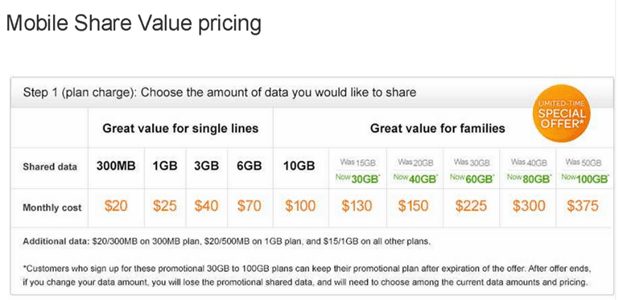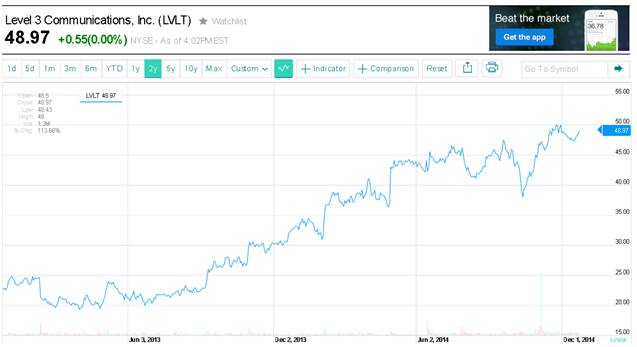Editor’s Note: Welcome to our weekly Reality Check column where C-level executives and advisory firms from across the mobile industry share unique insights and experiences.
Sixty-eight readers sent “top ten” nominations that form the basis for this week’s column. These events (in chronological order) were determined by you as the most impactful of 2014:
1. (Jan. 8) At the Consumer Electronics Show, T-Mobile US announces early termination fee buyouts of up to $350 and phone trade-in credits of up to $300: It’s hard to remember a time when T-Mobile US’ ETF promotion did not exist, but it’s only been around since January. It launched a remarkably successful year for T-Mobile US (re: T-Mobile US added more than 1.3 million branded postpaid customers during the first quarter) and, because of its jarring impact on family plans, created the spark for AT&T Mobility’s launch of their pooled data plans in February (see below).
2. (Jan. 14) Federal Appeals Court overturns the core principles of net neutrality: In an action that caught few analysts by surprise, the U.S. Court of Appeals vacated the anti-discrimination and anti-blocking rules of the Open Internet Order. The reason for overturning the provisions concerned the Federal Communications Commission’s authority to impose these rules based on the 1996 Telecommunications Act – specifically section 706. This action created regulatory uncertainty for most of 2014. Both the FCC and the Obama administration worked on separate and, in many ways, opposing solutions to resolve the issue. This promises to come to a head with the new congress as they will likely enact legislation to allow the FCC to pursue alternatives that fall short of full common carrier (Title II) regulation.
3. (Feb. 1) AT&T Mobility introduces revised Mobile Share Plans: Part of the reason why this action deserves “top 10” status is that AT&T actually surprised the telecom community with its announcement. Verizon Wireless was especially caught off guard and it showed in their Q1 postpaid net adds. Excluding tablets, this figure was negative for Verizon Wireless; in contrast, AT&T Mobility added more phone net adds in Q1 than all of 2013.
In addition to external net additions, AT&T Mobility allowed existing customers who were under contract to opt-in to the Mobile Share Plans with no penalties. Contrast this with Sprint’s $100 for 20 gigabytes introduced in August, which was not as easily extended to their existing customer base and opened the door to increased defections. While customers’ data rates did not change, the cost to have unlimited voice and text dropped from $40 to $25 or $15 per month depending on the amount of plan data. AT&T Mobility paired this change with significant advertising throughout March and, as a result, notched their lowest postpaid monthly churn in recent memory during the second quarter – 0.86%, down 160 basis points from the previous year.
4. (Feb. 4) Microsoft announces enterprise and cloud services head Satya Nadella as CEO: Nearly everyone who submitted a top 10 list talked about the influence of Nadella across the entire software industry. Microsoft is a different company than it was under Steve Ballmer, who once referred to competing operating system platform Linux as a “malignant cancer.” Nadella understands the concept of a software ecosystem. He is happy with a smaller part of a growing pie. One of his first actions as CEO was to offer a free version of Microsoft Office for the iPad. Then he launched a free version of Windows. Then Microsoft announced a strategic relationship with Dropbox, making it as easy to access as Microsoft’s competing product called OneDrive. Microsoft is finally leading – their strategy shift has driven the company’s valuation to $400 billion by the end of 2014, outperforming Oracle, Google and Amazon.com.
5. (Feb. 13) After multiple party discussions with Charter, Liberty and others, Comcast offers to acquire Time Warner Cable for $45.2 billion: This accelerated the discussions between DirecTV and AT&T, eventually leading to AT&T’s offer in mid-May to buy DirecTV (see description below). While many may see Apple’s iPhone 6 announcement as the most impactful event of the year, I think this merger “two-fer” will likely shape the industry more than Apple over the next decade. Comcast will own nearly every major East Coast market following the completion of the transaction, and the resulting business footprint – now in association with Charter Communications, which will own or run most of the Great Lakes territory – will challenge AT&T and Verizon Communications. The FCC approval clock has been put on hold again, this time at least until Jan. 12.
6. (May 18) AT&T announces it’s acquiring DirecTV – and the fun doesn’t stop there: After months of rumors, and against the backdrop of the FCC reviewing Comcast’s acquisition offer of Time Warner Cable, AT&T announced it would buy DirecTV in a $67 billion transaction ($48.5 billion of equity, $18.6 billion of debt). With this acquisition, AT&T gets National Football League content – a key component of the deal – additional domestic and international scale to use in retransmission negotiations and a strong management team. Most importantly, the U-verse network can now be used for data, which is what it was designed to do best. When we ranked this one of the largest acqui-hires in business history, many smirked, but AT&T reorganized the company around the DirecTV acquisition, combining business and mobility units in late August. Then in November they turned around and announced that they would be purchasing Mexican mobile provider Iusacell for $2.5 billion, building on DirecTV’s Latin American presence. The NFL “Sunday Ticket” offering is a great content play, but just a sliver of the content they will need to effectively compete against a combined Comcast/Time Warner Cable – with Charter and their “NewCo” cable company in full cooperation.
7. (June 16) Level3 announces the acquisition of TW Telecom for $7.5 billion: One of the great comeback stories of the past two years has been Level3. Lots of hard work and operational focus have allowed it to grow profitability and, as a result, the stock has more than doubled over the past year (see chart for performance versus TW Telecom).
It’s hard to imagine five years ago discussing Level3 making a strategic transaction like acquiring TW Telecom with stock, which is 76% of the deal value. However, that’s exactly what they announced in June. Wireline may be boring, but to enterprise and carrier customers who depend on Level3’s network for cost-competitive access, the combined company is critical. TW Telecom brings 21,800 on-net U.S. buildings and 500 data centers across 76 markets to the equation. They also bring a lot of enterprise customers. Between Level3 and Zayo, the wireline center of the United States is firmly centered in Denver, and the value creation by both companies should continue to increase throughout 2015.
8. (June 25, Sept. 15) Google announces and launches their Android One initiative: In contrast to the iPhone announcement of a bigger processor, powerful graphics, expanded storage and memory, Google used 2014 to solve the problem of smartphone affordability. First announced at their annual I/O event, the Android One standard runs stock versions of the Android KitKat (4.4) operating system – Google promises that each Android One device will receive the Lollipop update when the carriers make it available. Google handles security updates and provides the reference architecture for Android One devices, allowing manufacturers to focus on supply-chain issues. The first devices, announced on Sept. 15 for the India market, had very attractive price points (6,399 rupees or $101 at today’s exchange rate – see here for the Micromax product on Amazon India and here for the Karbon product on SnapDeal). The first devices are manufactured by India-based operators Micromax, Karbonn and Spice and feature a MediaTek quad-core chipset. No Qualcomm, Huawei or ZTE in the first batch of Android One devices. The expansion of Android One throughout south Asia was announced last week. The associated impacts to market leader Nokia and challenger Samsung in India are not yet known, but every expansion enables greater scale for their upstart competitors. Android One expansion is a trend definitely worth watching throughout 2015.
9. (Aug. 6) Dan Hesse resigns from Sprint and board member/billionaire entrepreneur Marcelo Claure takes over: Sprint was reeling from a failed merger with T-Mobile US, network upgrades that were keeping the company current with competition in one-third of the country (Sprint Spark markets) but behind in others and a balance sheet filled with over $31 billion in gross debt. It was the right time for Hesse to step down, but could Claure fill his shoes? The jury is still out after four months, but Claure has done a lot to stem customer defections, cut costs and create market disruption. Many of their key executive positions remain unfilled, however, as they head into 2015: chief marketing officer; president of enterprise markets; and president – Hispanic and multicultural markets. On top of this, Sprint has ceded the No. 1 position in prepaid to T-Mobile US and will likely lose the No. 3 position in postpaid in 2015. Sprint’s postpaid subscriber advantage over T-Mobile US was 8.5 million customers entering 2014 and stood at 4 million at of the end of the third quarter. Sprint’s competitive sustainability will be one of the most important events to watch in 2015.
10. (Sept. 9) iPhone 6/6 Plus announced (importance to Wi-Fi): Without a doubt, the iPhone 6/6 Plus announcement was one of the key events of 2014. There were few hardware announcements prior to that time – the iPad 4 and some small changes to the pricing of the Macbook Air. But September more than made up for the eight-month drought – two smartphones, the promise of a watch, a new Mac with a “5K Retina” display, iOS 8 and Apple Pay created momentum for a blockbuster end to the year. Think about it – can you name Apple’s Cyber Monday offering? That’s a good indicator. On the network side, the iPhone 6 supports voice over LTE (which will hasten its adoption), voice over Wi-Fi (which will hasten its adoption, particularly in thick-walled buildings) and payments. Space does not permit a full evaluation of what these announcements hold for Apple, but this article by Andrew Cunningham in Ars Technica does an excellent job of predicting how Apple will succeed.
We’ll take a break for the rest of the year, but be back at it again on Jan. 4 with our “CES Preview” edition. Thanks again for your readership, and have a Happy Holiday and a fantastic 2015!
Jim Patterson is CEO of Patterson Advisory Group, a tactical consulting and advisory services firm dedicated to the telecommunications industry. Previously, he was EVP – business development for Infotel Broadband Services Ltd., the 4G service provider for Reliance Industries Ltd. Patterson also co-founded Mobile Symmetry, an identity-focused applications platform for wireless broadband carriers that was acquired by Infotel in 2011. Prior to Mobile Symmetry, Patterson was president – wholesale services for Sprint and has a career that spans over 20 years in telecom and technology. Patterson welcomes your comments at jim@pattersonadvice.com and you can follow him on Twitter @pattersonadvice.
Photo copyright: / 123RF Stock Photo




